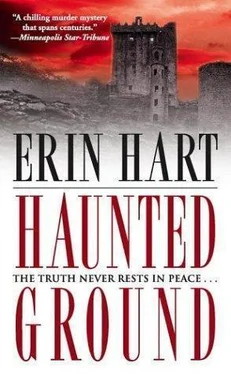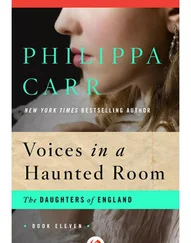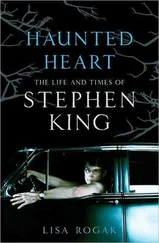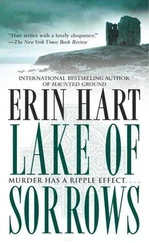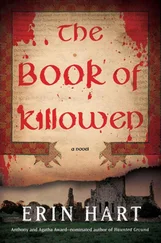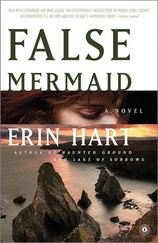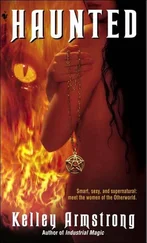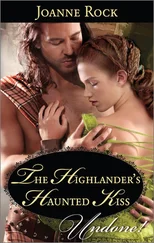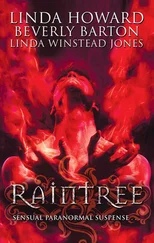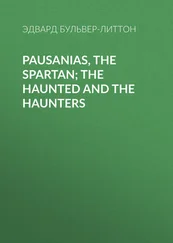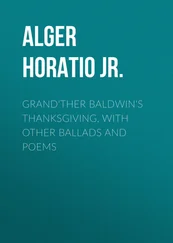“Nora—are you all right?” Cormac asked. His dark eyes scanned her face. “You look a bit pale.”
“I’m fine,” she said, pulling away. “I just need a drink; I’m a bit parched.” She went around to the driver’s side of the car to fetch her water bottle, and lifted it to take a long swallow, hoping that her hand wasn’t visibly shaking.
“I shouldn’t really be talking about any of this,” Devaney finally said. “It’s an ongoing investigation.”
“Thanks for explaining, Detective,” Cormac said. Nora could still feel his eyes on her. “We’d like to help, of course, but I’m not sure there’s anything we can do. Dr. Gavin’s got to be leaving straightaway for Dublin. I’ll stay and finish up here in the morning, but—”
“You’re doing what you have to do,” Devaney said, looking away. “So are we all.”
As she indicated her turn and pulled cautiously out onto the main road to Portumna, Nora allowed her thoughts to settle on the strange cargo she carried. It was difficult not to think of it; at every rough patch in the road, she could feel the weight of the waterlogged block of peat in the trunk of the car. Remembering the expression she had seen stamped on the young woman’s features, Nora felt a shiver. She told herself it was the damp. She hadn’t bothered to change before leaving the site, and now her jeans felt clammy against her skin, and the small bits of peat that still stuck to her arms were beginning to itch beneath her thick sweater. She reached forward to turn on the car’s heater.
If only there were some clue, some lead that would help them find out more about this red-haired girl. Unfortunately they had found no clothing of any kind, which was often useful in dating bog bodies. Nothing but that piece of burlap. Perhaps the absence of the body was a clue in itself. Was the girl’s head intended as a trophy of some kind, an offering to some terrible deity? She’d often read that the ancient Celts revered the head as the seat of the soul, and had decorated their shrines and holy places with the skulls and desiccated heads of their enemies. Several of the most well-preserved bog bodies in Europe were thought to be human sacrifices, because they’d undergone what Celtic scholars called a “triple death”—ritual garrotting, slitting of the throat, and finally drowning, their bodies weighted down with stones or branches—perhaps to appease a blood-thirsty pagan trinity. Was this red-haired girl among those chosen for such a role, in which the last stage of her triple death was beheading? Had she committed some unpardonable sin—adultery, perhaps, or murder—for which her community had wreaked its punishment and cast her into the bog? Or was she simply the victim of murder, carved up and disposed of in such a gruesome way?
Nora was not unaware of the reputation that she was beginning to earn for what some considered, even in the medical community, a rather macabre and sensational preoccupation. In addition to her duties as a parttime anatomy lecturer at Trinity, she was pursuing graduate level work of her own: a major research project studying the physical and chemical effects of bog burial. The irony was that this was her first experience of an actual bog body; all her research thus far had been carried out on mummified museum specimens, or on “paper bodies”—written records of remains that had been destroyed or reburied soon after their discovery.
Why should this unfortunate creature be any different from the dozens of other nameless souls who lost their way or were left purposely in such dangerous, deserted places? She remembered poring for hours over the gazetteer of Irish bog bodies that Gabriel McCrossan had been helping her to update, and being moved by its bare descriptions—devoid of identity, but imbued with unforgettable detail: a young child of indeterminate gender dressed in a pinafore, with boxwood comb, leather purse, and ball of thread still in its pocket; a man’s left foot with stocking and leather shoe intact; the partially preserved body of a young woman, and, nearby, the skeletal remains of an infant with a small buckled leather strap around its neck. Each of these had a story as well, but they were all lost now, and would never be discovered. The red-haired girl would no doubt end up as just another anonymous entry, the minutiae of her life erased by time. And yet Nora found herself unable to abandon the idea that even a single clue might point the way toward the red-haired girl’s identity. She tried to remember whether the girl had any kind of distinctive hairstyle—any kind of plait or knot that would help suggest a date. All at once her memory was overtaken by a sensation, the feeling of the wiry strands against her fingertips as she pulled the hairbrush through her younger sister’s luxuriant mane with quick, sure strokes, parting and twisting three strands into a single thick braid—Ouch, Nora, you’re pulling too hard, Triona’s plaintive cry echoed in her head, along with her own peevish reply: I am not pulling. If you’d ever stop squirming—
The edges of the road swam as tears welled up in her eyes, and Nora felt as if she would choke, but she pulled off the road and fought against the memory. The events of this day opened a fissure in the wall she had tried to build around her heart, and now she felt it crumble and give way, engulfing her once more in a fierce, pulverizing flood of grief.
She had told no one in Ireland about her sister’s brutal murder. Gabriel had come to know a few of the facts, but he didn’t know that the strongest suspect was Triona’s own husband, Peter Hallett. And Nora was certain that no one had told Gabriel how the desire to see her sister’s killer brought to justice had taken over and consumed her. That single, desperate need had pushed aside everything else: her job, her relationships, her whole life. She should have stayed and kept fighting, for Elizabeth’s sake; the child was only six when Triona died. A few months after the murder, when Peter found out Nora was helping the police to find evidence against him, he had abruptly cut her off from any contact with her niece. After three years of bitter frustration, Nora’s endurance had nearly been exhausted. She told herself she had not given up—that would never happen—but she had come to Ireland eighteen months ago to think and recover her strength.
But to come all this way and be faced with another red-haired victim, a missing wife, a husband who might have killed her—Nora knew that if she were in a slightly more paranoid frame of mind, she could believe that someone, something, was deliberately mocking her sorrow.
Nuala Devaney was standing in the doorway to the kitchen, fiddling with the clasp on her necklace when her husband stepped forward to help.
“I might be late,” she said to him over her shoulder. “It’s a couple over from Belgium, so I told them we might go out for a drink after they look at the house, you know, showing off the local.” Devaney settled the tiny clasp, then stepped back to gaze at his wife, admiring the way she looked in that particular pale green suit. He often felt that while approaching middle age had diminished him in many ways, it had only improved Nuala.
“Thanks, love. The kettle’s just boiled, and your supper’s in the cooker. Would you believe they’re looking at a place up in Tullymore? A ruin. None of them are the least bit interested in a new house; they all want the old falling-down cottages. Preferably thatched, if you don’t mind.” She paused and looked straight at him, as if trying to gauge whether he’d heard a word she’d said. “Are you all right, Gar?”
“Grand,” he said. “I’ve some paperwork to do.” He gestured toward the briefcase sitting at the other end of the kitchen table. “And then I’m headed down to the session.”
Читать дальше
